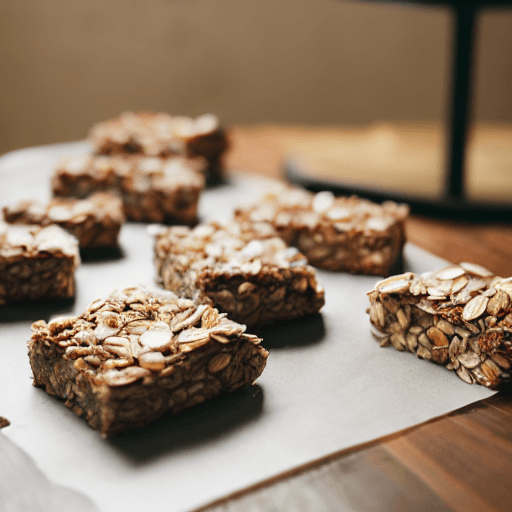Why You’ll Love This Recipe
An authentic Italian breakfast brings the simple pleasures of Italy right to your kitchen. Unlike hearty American breakfasts, Italian colazione is light, sweet, and built around coffee. This traditional morning meal perfectly balances simplicity with satisfaction, giving you just enough energy to start your day without weighing you down.
Pure Comfort
There’s something deeply comforting about sipping a perfectly crafted cappuccino alongside a freshly baked cornetto. This breakfast ritual, enjoyed by millions of Italians daily, transforms an ordinary morning into a moment of tranquility. The combination of rich coffee and sweet pastry creates a harmonious pause before the day begins.

What You Need
- High-quality espresso or strong coffee
- Whole milk (for cappuccino)
- Cornetti (Italian croissants) or brioche
- Fresh seasonal fruit
- Yogurt (optional)
- Freshly squeezed orange juice
- Biscotti or other small cookies
- Honey or jam for spreading
Time to Cook
Preparation time: 5-10 minutes Coffee brewing time: 2-3 minutes Total time: 15 minutes
Steps to Make It
- Prepare your espresso using an espresso machine or moka pot. If you don’t have either, brew very strong coffee.
- For a cappuccino, heat milk in a small saucepan until steaming but not boiling.
- Froth the milk using a frother, whisk, or by shaking vigorously in a sealed jar.
- Pour the espresso into a cup, then add the frothed milk, maintaining a 1:1 ratio.
- Warm your cornetto or brioche in the oven for 2-3 minutes until just heated through.
- Arrange everything on a plate or tray with small dishes of jam or honey.
- Add fresh fruit and yogurt on the side if desired.
- Finish with a small glass of freshly squeezed orange juice.
Make It Perfect
For an authentic Italian cappuccino, remember that Italians typically don’t add sugar—the milk provides natural sweetness. If you’re making a cornetto at home, brush with egg wash before baking for that characteristic golden shine. Always serve your coffee hot and fresh, and remember that Italians never drink cappuccino after 11 am!
Mix It Up
For variety, try caffè latte (more milk, less foam than cappuccino) or caffè macchiato (espresso “stained” with a small amount of milk). Switch your cornetto for fette biscottate (crisp, dry toast) spread with jam, or try pan brioche, a soft, slightly sweet bread popular in northern Italy.
Perfect Partners
Complete your Italian breakfast experience with seasonal fruits like fresh berries in summer or sliced persimmons in fall. A small pot of plain yogurt drizzled with honey makes a perfect accompaniment. For special occasions, add a small glass of freshly squeezed blood orange juice.
Busy Day Hero
When time is tight, the Italian breakfast shines—it’s designed to be quick! Prepare your coffee, grab a pre-made cornetto or slice of bread with jam, and you’re ready in under five minutes. This is why Italians often stop at a bar (café) for a quick standing breakfast before work.
Work Ahead
While Italian breakfast is typically fresh, you can prepare some elements ahead of time. Purchase quality cornetti and freeze them, reheating one at a time. Pre-portion fruit the night before, and set out your coffee supplies so everything is ready to go in the morning.
Save Some For Later
If you have leftover cornetti, store them in an airtight container and refresh in the oven for a few minutes before eating. Day-old pastries can be transformed into a delicious bread pudding with eggs, milk, and sugar for tomorrow’s dessert—waste not, want not!
Everyone’s Happy
Italian breakfast easily adapts to different preferences. For kids, serve warmed milk with a touch of coffee (caffè latte) and honey. For those avoiding gluten, substitute almond cookies or gluten-free biscotti. Vegans can enjoy espresso with plant-based milk and fruit.
Good For You Too
The Italian approach to breakfast offers nutritional benefits—it’s light yet satisfying, preventing that mid-morning energy crash. The small portion size aligns with mindful eating practices, while the ritual of sitting down (even briefly) to enjoy your morning coffee promotes better digestion and mental presence.
Easy Clean Up
One of the joys of Italian breakfast is minimal cleanup. A single cup, small plate, and perhaps a bowl for fruit means you’ll spend less time washing dishes and more time enjoying your morning. Use a cloth napkin for an authentic touch that’s also environmentally friendly.
Switch It Up
For weekend indulgence, try ciambella (Italian breakfast cake) or crostata (jam tart) with your coffee. In summer, many Italians enjoy granita con brioche—a semi-frozen dessert similar to sorbet served with a sweet bun—especially in Sicily where it’s a breakfast staple.
Simply Perfect
The beauty of Italian breakfast lies in its simplicity. Quality ingredients, mindfully combined, create a moment of pleasure without excess. This breakfast tradition exemplifies the Italian philosophy that life’s greatest pleasures come from uncomplicated excellence rather than abundance.
FAQs About Italian Breakfast Food
Why Do Italians Have Light Breakfasts?
Italians prioritize lunch and dinner as the main meals of the day. Italians keep breakfast light and quick, ensuring it provides just enough energy for the morning without feeling heavy. This tradition also reflects the Italian lifestyle of savoring food in moderation.
What Is the Most Common Breakfast Drink in Italy?
Coffee is the most common breakfast drink, with espresso and cappuccino being the top choices. Freshly squeezed orange juice and herbal teas are also popular.
Are Savory Breakfasts Popular in Italy?
Savory breakfasts are less common but not unheard of.People in Northern Italy occasionally enjoy bread with cheese or cured meats. However, sweet items like pastries dominate breakfast culture.
Can You Find Vegan Options in Italian Breakfast Menus?
Yes, vegan options are becoming more available, particularly in urban areas. Many cafes offer plant-based milk alternatives for coffee and pastries made without dairy or eggs. Fruits, bread, and spreads like jam or marmalade are naturally vegan-friendly.
How Has Italian Breakfast Food Changed Over Time?
Italian breakfasts have evolved from simple farmer staples like bread and cheese to the coffee-and-pastry culture seen today. Modern trends include healthier options like yogurt, whole grains, and smoothies, reflecting global influences and health-conscious lifestyles.
What Should Tourists Know About Italian Breakfast Customs?
- Timing: Breakfast is usually light and quick. Cafes are busiest in the early morning.
- Standing at the Bar: Many Italians enjoy their coffee while standing at the counter. This is often cheaper than sitting at a table.
- Italians consider cappuccinos a morning drink and rarely order them after 11 a.m.
- Local Specialties: Explore regional variations such as granita and brioche in Sicily or sfogliatelle in Naples for a deeper cultural experience.
Italian Breakfast Food: A Culinary Tradition
Italian breakfast, or colazione, cherishes simplicity, quality, and regional diversity as a cultural ritual. This article explores the staples of Authentic Colazione , the influence of regional variations, and tips on creating an authentic experience at home.

Italian Coffee Culture
Coffee is the cornerstone of Italian breakfast, with espresso and cappuccino leading the charge. For more insights on Italian coffee etiquette, check out When Not to Drink Coffee in Italy: Cultural Norms and Etiquette.
Breakfast Staples: Cappuccino and Cornetto
The combination of cappuccino and cornetto epitomizes Italian breakfast simplicity. This pairing is a delicious and time-honored tradition that defines the start of the day for many Italians. Dive deeper into this classic duo in Most Popular Breakfast in Italy: Cappuccino and Cornetto Delight.
Regional Diversity in Italian Breakfast
From granita and brioche in Sicily to savory breads in the North, regional specialties highlight Italy’s culinary richness. To understand the nuances between croissants and cornetti, explore What is the Difference Between a Croissant and a Cornetto?.
Morning Beverages Beyond Coffee
While coffee reigns supreme, herbal teas, hot chocolate, and fresh juices add variety to Italian mornings. Discover more about the beverage traditions in Top Italian Morning Drinks: Traditions, Rituals, and Cultural Insights.
Savory Italian Breakfast Options
Although sweets dominate, savory breakfasts such as Italian baked eggs with sausage are gaining popularity, offering a hearty alternative. Learn how to prepare this dish with Italian Baked Eggs with Sausage.
By incorporating these links, readers can explore related topics and dive deeper into the nuances of Italian breakfast culture, enhancing their understanding and appreciation of this delightful tradition.
Conclusion
Italian breakfast, or colazione, is a reflection of the country’s rich cultural and culinary heritage, rooted in simplicity, quality, and a strong sense of tradition. From the iconic pairing of coffee and pastries to regional specialties like granita in Sicily or sfogliatelle in Naples, each breakfast item tells a story of Italy’s diverse landscape and history.
The emphasis on light, balanced meals highlights a broader Italian philosophy of savoring food without excess, reserving the grandeur for lunch and dinner. Modern trends, including healthier and vegan-friendly options, show how Italian breakfasts continue to evolve while preserving their essence.
Whether enjoyed standing at a local café bar or recreated at home with care, an Italian breakfast is more than just a meal—it’s a moment of connection to Italy’s lifestyle, values, and artistry. By embracing the traditions and flavors of colazione, anyone can experience a slice of Italian life, wherever they may be.

